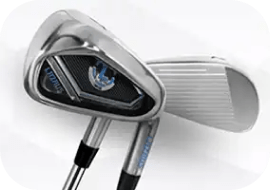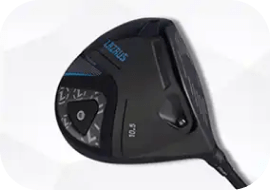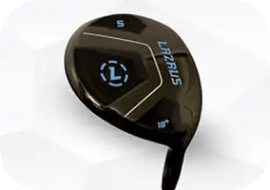Launch & Trajectory
The 56-degree wedge has a lower, more piercing ball flight with moderate peak height. This flight path is reliable in the wind and offers consistent distance control. The 60-degree wedge launches much higher and with a steeper landing angle. The ball shoots up fast, peaks higher and comes down almost straight on the green.
Versatility
The 56-degree wedge is generally more versatile across various situations. It plays well off full shots, pitch shots, chip shots, bunker play and even bump-and-run shots. This is what makes it the most common wedge for so many.
The 60-degree wedge specializes in specific situations requiring maximum height and minimum distance. It's a great choice for flop shots, short-sided bunker shots, and soft chips over hazards. But it is less forgiving and calls for a little more precision.
Shot Comparisons: 56 vs 60 Degree Wedge
Full Shot Performance
Full shots reveal the distance advantage of the 56-degree wedge clearly. The lower loft generates more ball speed and carries the ball 15-25 yards farther than the 60-degree. Control and consistency favor the 56-degree for full shots—the lower loft makes solid contact easier to achieve. The 60-degree wedge generates higher spin rates that stop the ball quickly but require pristine contact. The higher loft demands more precise ball-first contact to avoid fat or thin shots.
Chip Shots & Bump-and-Runs
There is more forgiveness and predictability for chip shots and bump-and-runs with the 56-degree wedge. The moderate loft provides a comfortable carry-to-roll ratio that is more controllable. You're able to utilize the same very basic technique in virtually any distance.
The 60-degree wedge requires more precise technique for standard chips. The high loft makes it easier to chunk shots fat or blade them thin. However, it excels when you need to carry the ball most of the way with minimal roll.
Bunker Shots
The 56-degree wedge has long been the default bunker club and there’s a good reason why. It has enough loft to get up and out over the lip, but a bounce design to keep it sliding across sand. With this loft most greenside bunkers become easy to navigate.
The 60-degree wedge shines in specific bunker situations such as buried lies, plugged balls, or minimal green to work with. The extra loft helps you get the ball up quickly and get more spin but requires more aggressive swings and precise technique.
When to Use Each Wedge
When to Use a 56 Degree Wedge
Use your 56-degree wedge for greenside bunker shots where you have adequate green to work with. This club should be your default bunker option. Longer chip shots from 20-40 yards benefit from the 56-degree wedge's distance control and trajectory.
Controlled approach shots from 80-100 yards play perfectly with this wedge. Use it when you need precision but don't require maximum height. The predictable trajectory makes distance control easier than with higher-lofted options.
When to Use a 60 Degree Wedge
Flop shots over bunkers or rough to tight pins demand the 60-degree wedge's high trajectory. This shot requires practice but becomes invaluable in tight situations. When short-sided to a tight pin, the 60-degree gives you the best chance of getting up and down.
Do You Need Both a 56 and 60 Degree Wedge?










